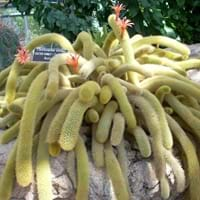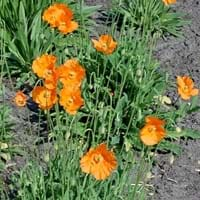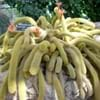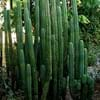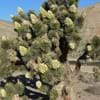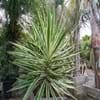Life Span
Perennial
Perennial
Type
Cactus
Flowering Plants
Origin
Not Available
Northern Africa, Morocco
Types
Not Available
Not Available
Habitat
Not Available
gardens, Grassland, Roadsides, tropical environments
USDA Hardiness Zone
12-15
6-8
Sunset Zone
12, 13, 21, 22, 23, 24
2b, 3a, 3b, 4, 5, 6, 7, 8, 9, 14, 15, 16, 17, 18, 19, 20, 21, 22, 23, 24
Habit
Upright/Erect
Clump-Forming
Flower Color
Red, Orange, Salmon
Orange
Flower Color Modifier
Not Available
Bicolor
Fruit Color
Not Available
Not Available
Leaf Color in Spring
Not Available
Light Green, Gray Green
Leaf Color in Summer
Not Available
Light Green, Gray Green
Leaf Color in Fall
Not Available
Light Green, Gray Green
Leaf Color in Winter
Not Available
Not Available
Leaf Shape
Succulent
Egg-shaped
Plant Season
Spring, Summer, Fall, Winter
Spring, Summer
Sunlight
Full Sun
Full Sun, Partial Sun
Growth Rate
Not Available
Medium
Type of Soil
Loam, Sand
Loam, Sand
The pH of Soil
Acidic, Neutral, Alkaline
Neutral, Alkaline
Soil Drainage
Well drained
Well drained
Bloom Time
Spring, Summer
Late Spring, Early Summer, Summer, Late Summer
Tolerances
Drought
Not Available
Where to Plant?
Container, Ground, Pot
Container, Ground, Pot
How to Plant?
Seedlings, Stem Cutting
Seedlings
Plant Maintenance
Medium
Medium
Watering Requirements
Reduce watering in winter
Form a Soil ring to water efficiently, Requires consistently moist soil, Requires regular watering, Water Deeply
In Summer
Lots of watering
Lots of watering
In Spring
Moderate
Moderate
In Winter
Average Water
Average Water
Soil pH
Acidic, Neutral, Alkaline
Neutral, Alkaline
Soil Type
Loam, Sand
Loam, Sand
Soil Drainage Capacity
Well drained
Well drained
Sun Exposure
Full Sun
Full Sun, Partial Sun
Pruning
No pruning needed, Remove damaged leaves, Remove dead branches, Remove dead leaves
Remove damaged leaves, Remove dead branches, Remove dead leaves
Fertilizers
Fertilize the soil before planting, slow-release fertilizers
All-Purpose Liquid Fertilizer
Pests and Diseases
Bacterial Stem Rot, fungus, Mealybugs, Spider mites
Red blotch
Plant Tolerance
Drought
Drought
Flower Petal Number
Single
Single
Foliage Texture
Bold
Medium
Foliage Sheen
Not Available
Matte
Attracts
Hummingbirds
Not Available
Allergy
Not Available
Skin irritation
Aesthetic Uses
Landscape Designing, Showy Purposes, Wild gardens
Showy Purposes
Beauty Benefits
Not Available
Not Available
Environmental Uses
Air purification
Air purification
Medicinal Uses
No Medicinal Use
Not Available
Part of Plant Used
Whole plant
Whole plant
Other Uses
Florist trade and landscaping, Used as Ornamental plant
Culinary use, Employed in herbal medicine, Showy Purposes, Used as Ornamental plant
Used As Indoor Plant
No
Yes
Used As Outdoor Plant
Yes
Yes
Garden Design
Container, Houseplant, Rock Garden, Wall
Alpine, Mixed Border, Rock Garden / Wall, Wildflower
Botanical Name
Cleistocactus Winteri
PAPAVER atlanticum
Common Name
Golden rat tail, rat tail cactus
Atlas Poppy, Moroccan Poppy
In Hindi
cleistocactus winteri
मोरक्को के पोस्ता
In German
Cleistocactus winteri
marokkanische Poppy
In French
Cleistocactus winteri
Poppy marocaine
In Spanish
Cleistocactus winteri
marroquí amapola
In Greek
cleistocactus winteri
μαροκινή παπαρούνας
In Portuguese
Cleistocactus Winteri
Moroccan Poppy
In Polish
Cleistocactus Winteri
marokański Poppy
In Latin
Cleistocactus Winteri
Moroccan Poppy
Phylum
Magnoliophyta
Magnoliophyta
Class
Magnoliopsida
Magnoliopsida
Order
Caryophyllales
Ranunculales
Family
Cactaceae
Papaveraceae
Genus
Cleistocactus
Papaver
Clade
Angiosperms, Core eudicots, Eudicots
Angiosperms, Eudicots
Tribe
Trichocereeae
Not Available
Subfamily
Cactoideae
Paperveroideae
Number of Species
Not Available
Difference Between Cleistocactus Winteri and Papaver atlanticum
If you are confused whether Cleistocactus Winteri or Papaver atlanticum are same, here are some features about those plants to help you choose better. Many people think that these two plants have the same characteristics, but one can see Cleistocactus Winteri and Papaver atlanticum Information and learn more about it. Fertilizers required for proper growth of Cleistocactus Winteri are Fertilize the soil before planting and slow-release fertilizers, whereas for Papaver atlanticum fertilizers required are All-Purpose Liquid Fertilizer. Hence, one should know the basic difference between Cleistocactus Winteri and Papaver atlanticum if you are planning to have them in your garden to enhance its beauty.
<
Flowering PlantsImportance of Cleistocactus Winteri and Papaver atlanticum
Want to have the most appropriate plant for your garden? You might want to know the importance of Cleistocactus Winteri and Papaver atlanticum. Basically, these two plants vary in many aspects. Compare Cleistocactus Winteri and Papaver atlanticum as they differ in many characteristics such as their life, care, benefits, facts, etc. Every gardener must at least have the slightest clue about the plants he wants to plant in his garden. Compare their benefits, which differ in many ways like facts and uses. The medicinal use of Cleistocactus Winteri is No Medicinal Use whereas of Papaver atlanticum is Not Available. Cleistocactus Winteri has beauty benefits as follows: Not Available while Papaver atlanticum has beauty benefits as follows: Not Available.
Compare Facts of Cleistocactus Winteri vs Papaver atlanticum
How to choose the best garden plant for your garden depending upon its facts? Here garden plant comparison will help you to solve this query. Compare the facts of Cleistocactus Winteri vs Papaver atlanticum and know which one to choose. As garden plants have benefits and other uses, allergy is also a major drawback of plants for some people. Allergic reactions of Cleistocactus Winteri are Not Available whereas of Papaver atlanticum have Skin irritation respectively. Having a fruit bearing plant in your garden can be a plus point of your garden. Cleistocactus Winteri has showy fruits and Papaver atlanticum has no showy fruits. Also Cleistocactus Winteri is flowering and Papaver atlanticum is not flowering . You can compare Cleistocactus Winteri and Papaver atlanticum facts and facts of other plants too.
